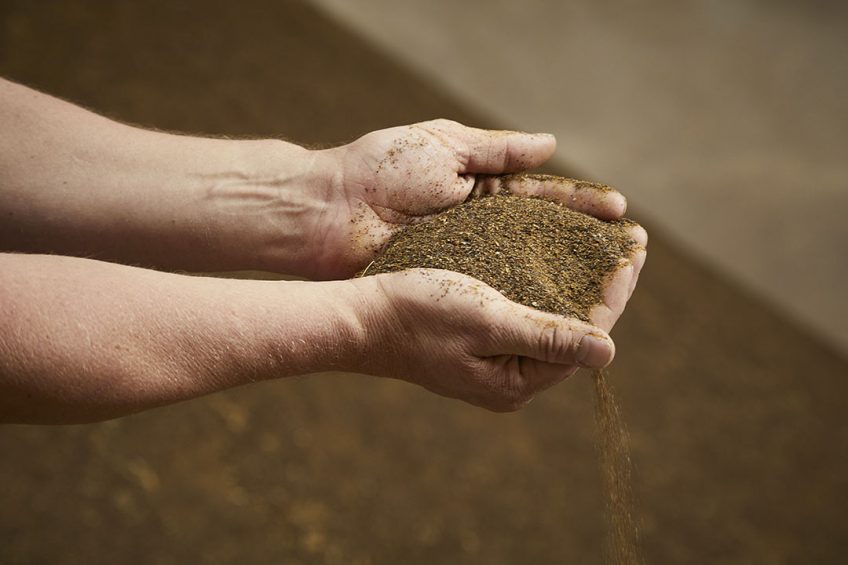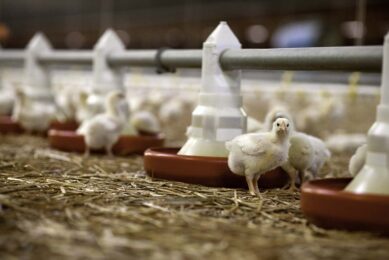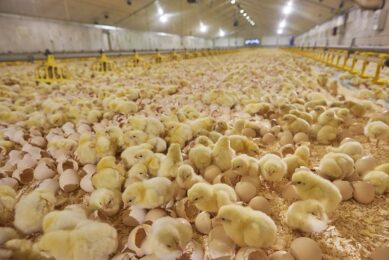Fermentation’s role in antibiotic reduction

Knowledge about the fermentation processes is rather new, although it has been used for thousands of years in preparation and conservation. In the biotechnology industry, fermentation introduces new health-promoting qualities to feed, reducing the overall need for antibiotics.
The growth of micro-organisms is associated with metabolic processes. The processes breakdown carbohydrates, proteins and lipids in the feed material and they release energy. When the metabolic processes of the micro-organisms take place in an oxygen-depleted environment (anaerobic conditions) the process is called ‘fermentation’. The end-products of the fermentation called metabolites, depend very much on the type of micro- organisms involved. Some micro-organisms produce vast amounts of alcohols, other specific organic acids from sugar components in the product. Examples of metabolites produced can also be amino acids, vitamins and antioxidants. When talking of lactic acid fermentation, the major metabolite from sugar components is lactic acid. This specific end- product is characteristic for the group of micro-organisms described by the term Lactic acid bacteria (LAB).
Microbial extracellular enzymes
Production of lactic acid is only one of several outcomes of the metabolic activity of the LAB. They are well known for their ability to produce extracellular enzymes such as proteases, amylases, cellulases, among others. The metabolic activity of LAB, therefore, also involves the activity of extracellular enzymes directed towards the breakdown of proteins and complex carbohydrates, of the feed material. The proteolytic system of the LAB is active and exert the hydrolysis of proteins into peptides and onto amino acids. These are essential for bacterial growth and contributes significantly to the pool of end-products in the feed. In high protein feeds, these proteolytic processes have significance by making the protein of the fermented feed more easily digestible for animal feeding and at the same time contributing to the pool of bioactive metabolic substances. Solubilisation of fibres by microbial enzymes is another feature of the fermented products. During lacto-fermentation, recalcitrant fibres from fibre-rich feeds, such as rapeseed and sunflower meals, are partially solubilised to become not only a good source of energy but also prebiotic oligosaccharides such as xyloglucans and arabinoxylans, beta-glucans. Prebiotic oligosaccharides boost microbial gut diversity towards a more beneficial microbial composition. Moreover, an abundance of solubilised fibre favours the production of VSCFA, like butyrate, propionate and acetate. In combination, they contribute to the maintenance of the gut barrier functions that keep the microbial-immune system interactions in homeostasis.
Figure 1 – Dose response of anti-inflammatory effect of fermented rapeseed-seaweed feed product (EP1199).

Depending on the feed material used for fermentation, the product is rich in a wide range of flavonoids and other phenolic compounds with antioxidant, anti-microbial and anti-inflammatory activity. Fermented rapeseed meal contains glucosinolate breakdown products including kaempferol, isothiocyanates, indole-3-carbinol and goitrin. Such substances have been demonstrated to provide detoxifying and anti-inflammatory activity. The effect of anti-inflammatory compounds in a lacto-fermented rapeseed meal-seaweed feed product (EP1199) is shown in Figure 1. An experiment investigated the production of cytokines related to bacterial inflammation on human dendritic cells. Some isothiocyanates have antimicrobial activity in both in vivo and in vitro studies against E. coli, Clostridium difficile, Clostridium perfringens and Campylobacter jejuni.
Figure 2 – Lactobacillus count in broiler trials with the addition of 10% of EP100i as a substitution of soybean meal.

The functionality of fermented feeds
It is widely recognised that nutrition shapes health and disease. Fermented feeds confer health benefits and prevent disease, by a combination of the probiotic effect of their inherent micro-organisms, the prebiotic benefit from the partial solubilisation of fibre, and the production of bioactive metabolic substances generated during fermentation by microbial enzymes. In young animals, microbial gut colonisation occurs gradually and develops in parallel with the immune system. In this way, the first bacteria colonising in the gut has higher advantages over later colonisers. Most lactic acid bacteria, such as Lactobacillus spp. and Enterococcus spp., are well-recognised probiotic key players in nutrition and health for animals. Lactobacillus can resist exposure to gastric juices and bile. As early gut colonisers, they readily thrive in the mucus layer of the small and large intestine (see Figure 2) and communicate with the gut-associated immune system to tolerate them sufficiently to avoid inflammation. Feeding sows fermented rapeseed meal improves the delivery of antibodies passed on in milk to newborn piglets to support their first level defence (Figure 3).
Figure 3 – Immunoglobulin titers in sow colostrum.

In wildlife, microbial colonisation of the gastrointestinal tract comes from diverse sources (e.g. soil, water). In conventional farming, this process is hampered, as the animals are kept in a closed space. Feeding is based on fixed formulations that have been heat-treated. Hence, newborns and starters depend primarily upon the mother’s milk and the microbiota on her skin and nearby surroundings, to obtain the right set of bacteria to develop a robust gut barrier and prepare them for the next life phase. Recent research demonstrates that fermented rapeseed meal (EP100i) included as protein in the feed formulation, given to sows throughout pregnancy and lactation, improves the condition of the newborn piglets significantly by reducing diarrhoea incidences and increasing the litter weight and the overall piglet health status at weaning.
The benefits on the immune system
The small and large intestines of animals are inhabited by a rich and diverse community of bacteria, archaea, fungi and virus. The majority are living in symbiosis with the animal. A crucial function is the maintenance of immuno-tolerance, with about 60-70% of immune functions being associated with the gastrointestinal tract. A balanced gut exists when the diversity of gut micro-organisms is tolerated well by the immune system, reducing inflammation events. Fermented feeds bring both beneficial bacteria that colonise the gut and are tolerated by the immune system, along with a vast array of health-promoting compounds. This leads to the displacement of potential pathogens and contributes to the preservation of homeostasis of the gut barrier. Fermented feeds enhance nutritional value and health in animals while reducing the need for antibiotics and other additives like medicinal zinc oxide, acidifiers and toxin binders. Upcoming scientific publications from Fermentationexperts will showcase more profound knowledge within this area of fermented feed.
References available on request
Authors: Paulina Tamez-Hidalgo and Grete Brunsgaard, Fermentationexperts
Join 31,000+ subscribers
Subscribe to our newsletter to stay updated about all the need-to-know content in the poultry sector, three times a week. Beheer
Beheer






 WP Admin
WP Admin  Bewerk bericht
Bewerk bericht